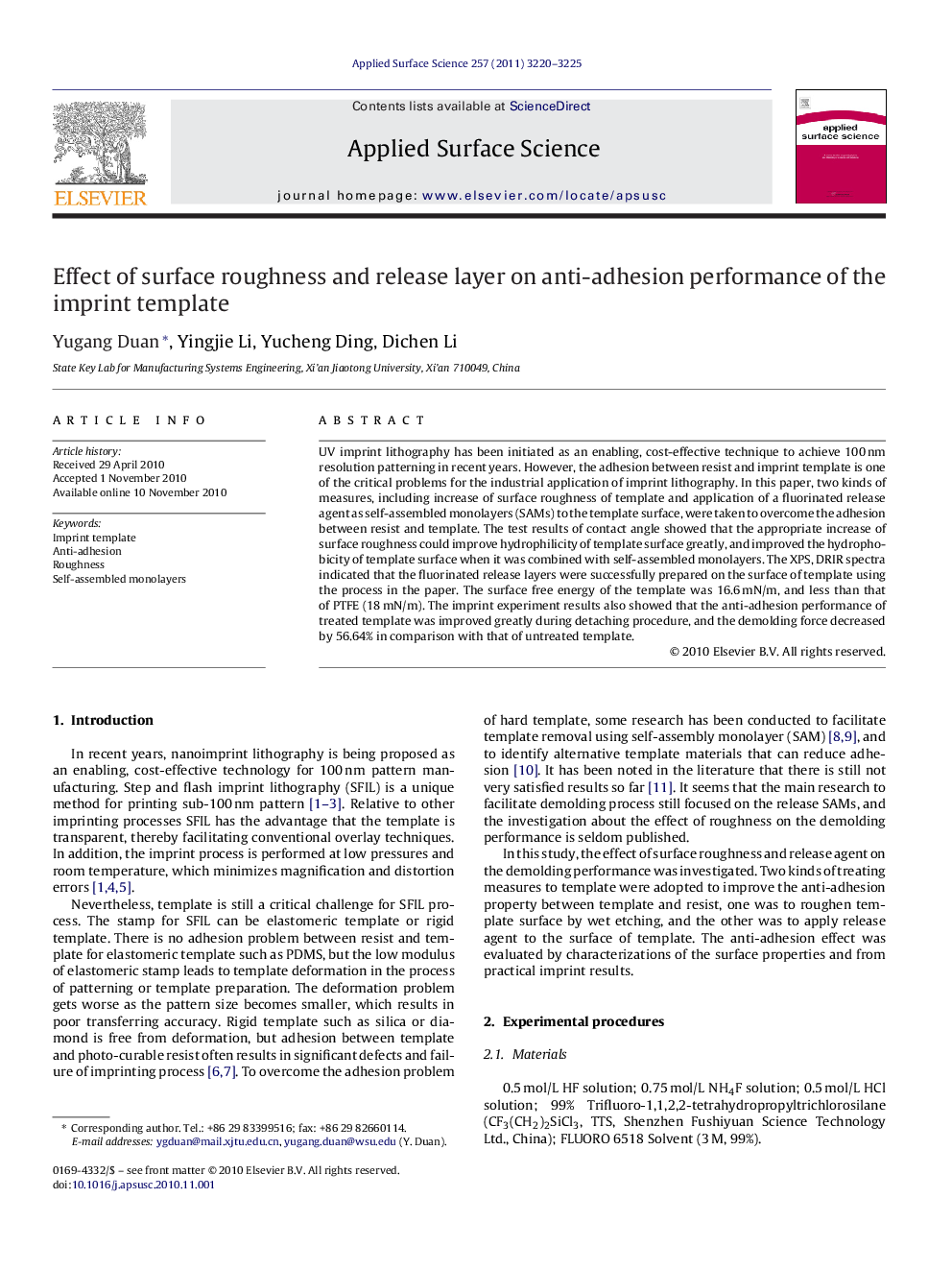| Article ID | Journal | Published Year | Pages | File Type |
|---|---|---|---|---|
| 5368024 | Applied Surface Science | 2011 | 6 Pages |
UV imprint lithography has been initiated as an enabling, cost-effective technique to achieve 100Â nm resolution patterning in recent years. However, the adhesion between resist and imprint template is one of the critical problems for the industrial application of imprint lithography. In this paper, two kinds of measures, including increase of surface roughness of template and application of a fluorinated release agent as self-assembled monolayers (SAMs) to the template surface, were taken to overcome the adhesion between resist and template. The test results of contact angle showed that the appropriate increase of surface roughness could improve hydrophilicity of template surface greatly, and improved the hydrophobicity of template surface when it was combined with self-assembled monolayers. The XPS, DRIR spectra indicated that the fluorinated release layers were successfully prepared on the surface of template using the process in the paper. The surface free energy of the template was 16.6Â mN/m, and less than that of PTFE (18Â mN/m). The imprint experiment results also showed that the anti-adhesion performance of treated template was improved greatly during detaching procedure, and the demolding force decreased by 56.64% in comparison with that of untreated template.
Research highlightsⶠThe appropriate increase of surface roughness could improve hydrophobicity of the template with fluorinated release SAMs. ⶠThe demolding force decreased by 56.64% with the treated template. ⶠThere was no obvious damage of the treated template surface after 100 times imprint performance.
